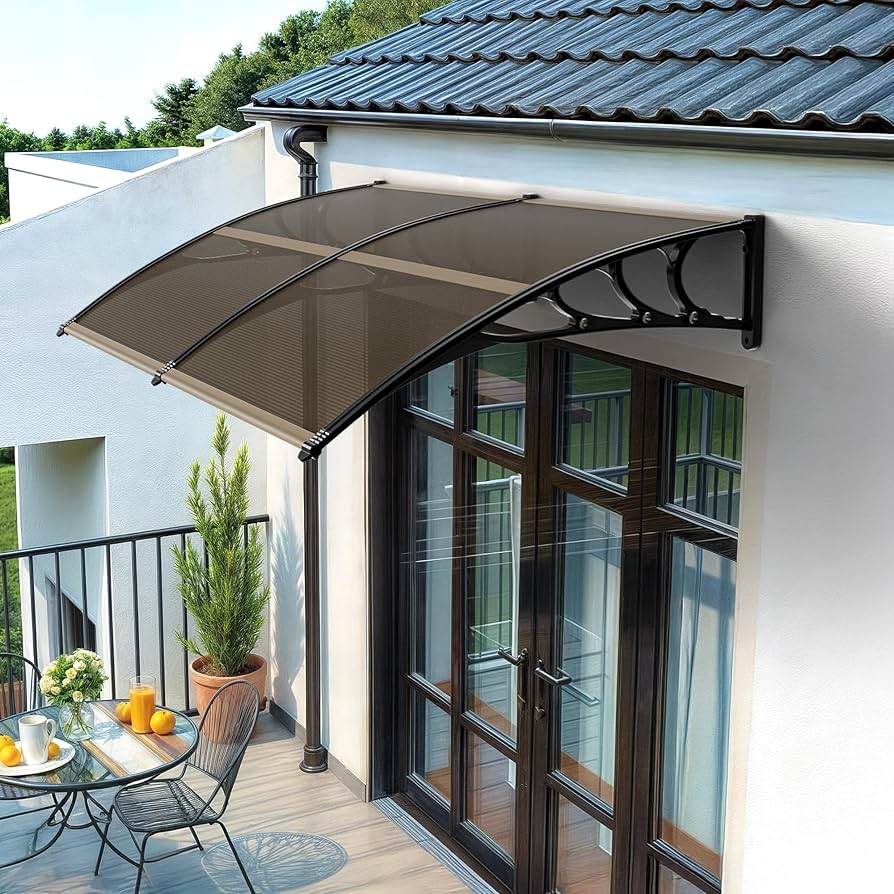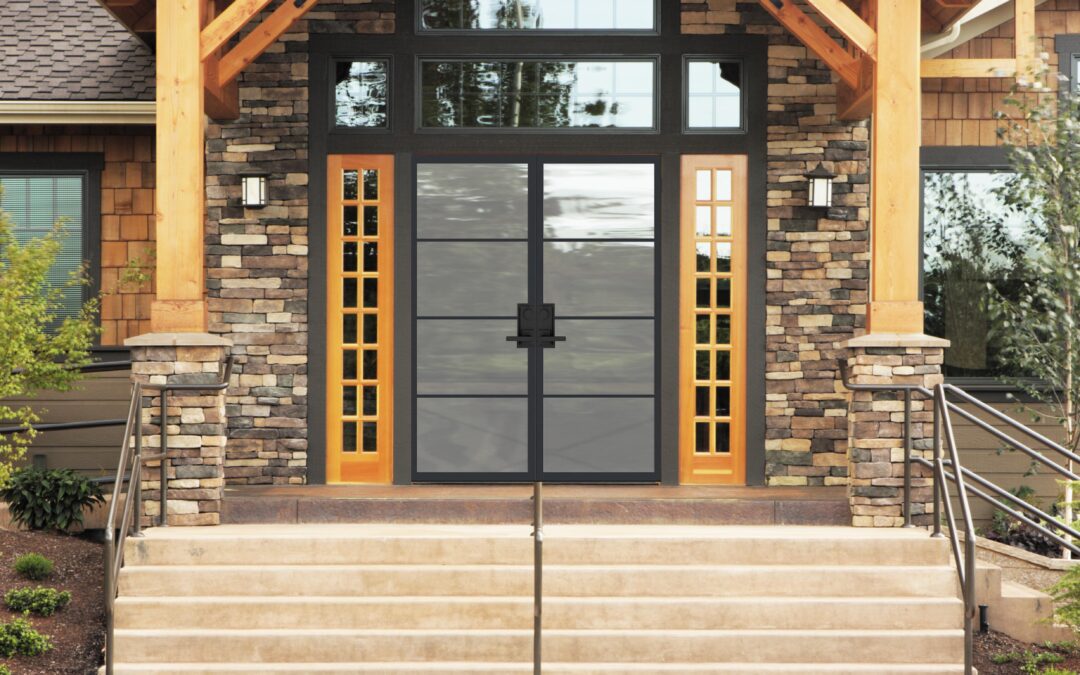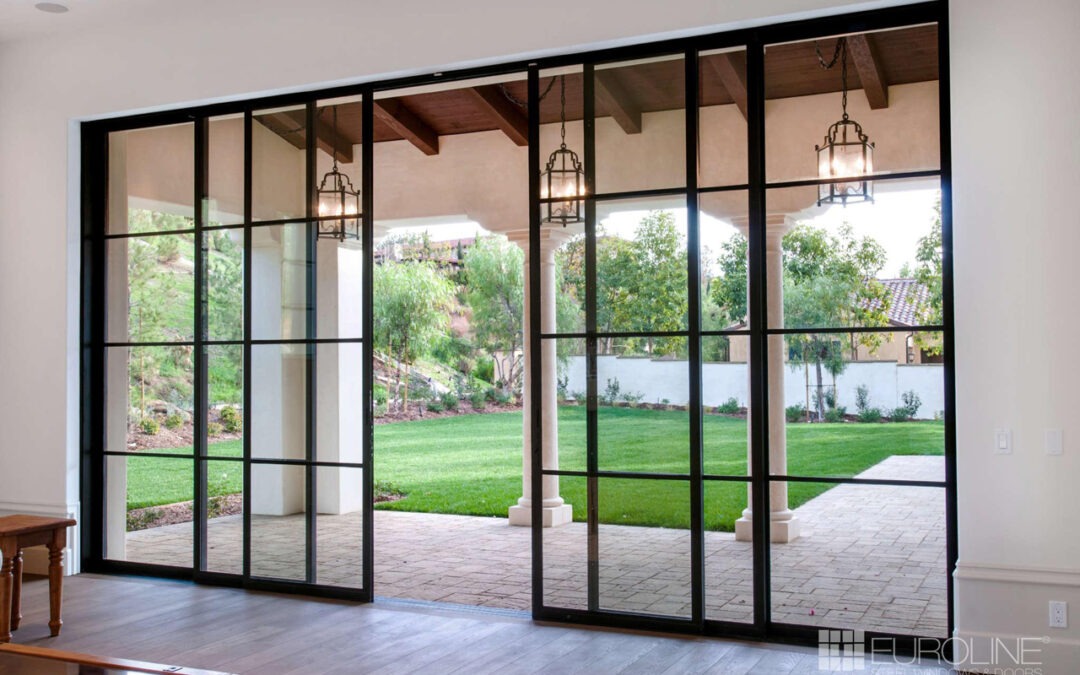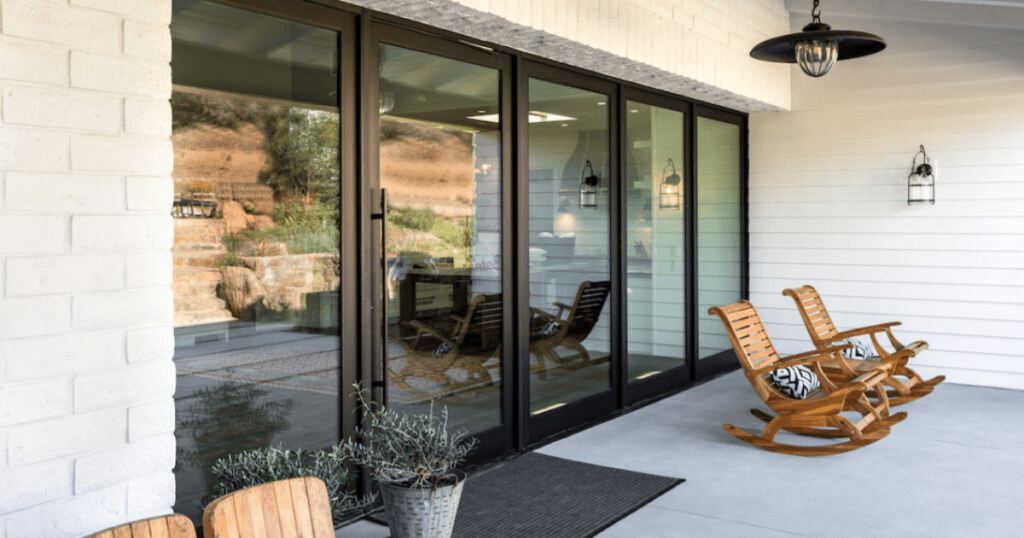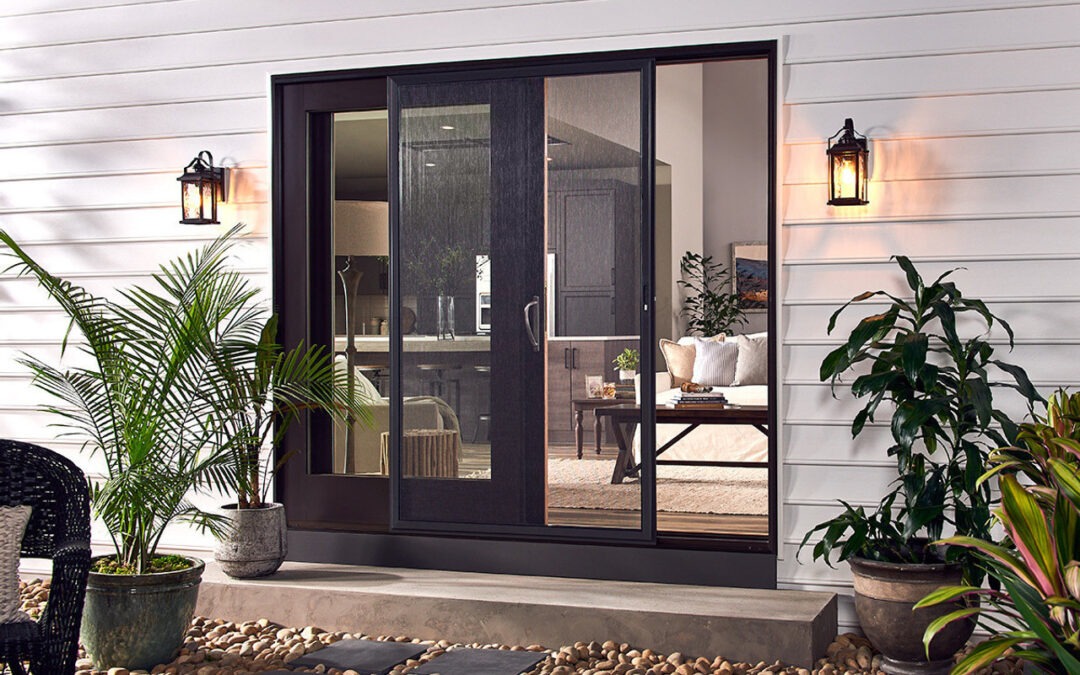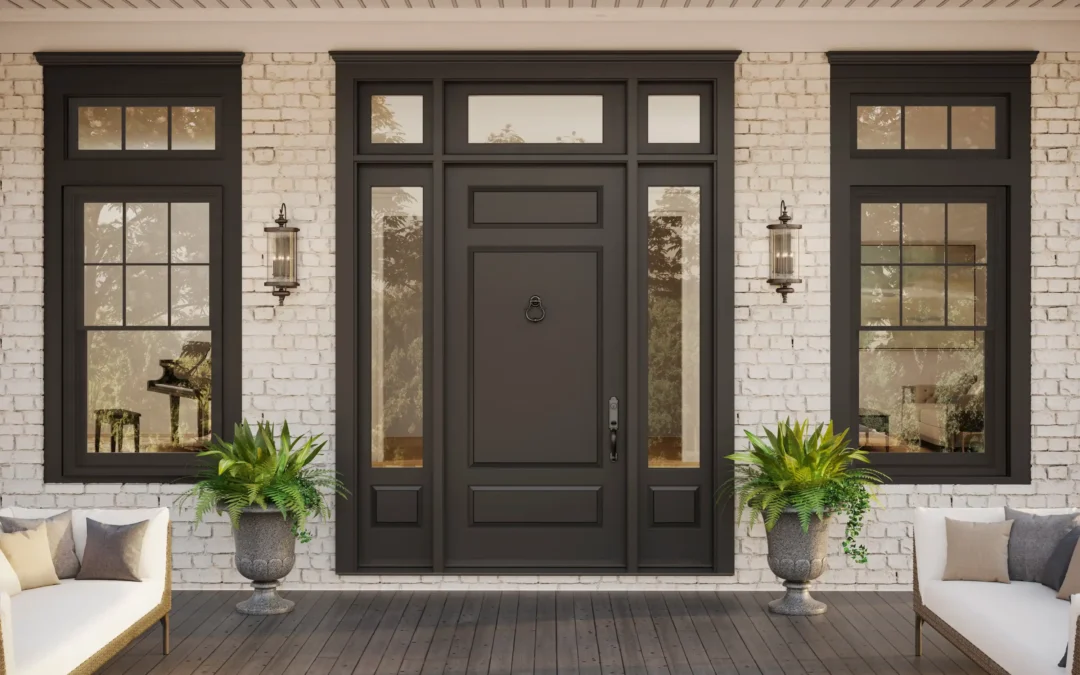Austin Homeowner’s Blueprint: How to Measure for Door Replacement 🚪📏✨
Thinking about replacing your exterior doors in Austin or Georgetown? It’s an exciting upgrade—but before choosing styles, materials, or stunning glass inserts, one critical step comes first: getting the measurements right. Your exterior doors do more than welcome guests; they enhance curb appeal, improve security, and boost energy efficiency. But none of that matters if the door doesn’t fit perfectly—leading to delays, costly adjustments, or compromised performance.
Door openings vary widely, especially in older Austin homes where settling and past renovations affect sizing. Even a small measuring mistake can cause major installation issues like drafts, poor alignment, or expensive reorders. At Imperium Exteriors, we help homeowners get it right the first time. Whether you’re doing initial measurements or preparing for a professional install, we’re here to guide you through the process with confidence.
We offer a wide selection of home doors, including different styles, materials, and colors, to match the look and feel of your home. We provide the top brands in the industry, including Marvin, Pro via, Therma Tru, Windcore, and many others. Our team also ensures that your doors are installed with a guarantee of easy opening and closing, which enhances your home’s security and energy efficiency.
Why Accurate Door Measurements Truly Matter: A Foundation for Success 📏🚪
Precision in door measurements is the bedrock of a successful door replacement. It’s a multifaceted impact that affects every aspect of your new door’s performance and aesthetics:
- A Seamless Installation Process: Correct measurements prevent frustrating, time-consuming, and costly on-site adjustments, last-minute reordering of doors, or potentially compromising your existing frame or wall structure. A perfectly measured door slides effortlessly into place.
- Optimal Energy Efficiency & Proper Sealing: An exact fit is paramount for effective weather stripping and sealing. Precise measurements ensure there are no hidden gaps around the door, dramatically reducing drafts, preventing air infiltration (critical for managing Austin’s heat and cold), and leading directly to lower HVAC loads and significant energy savings.
- Correct Hardware Alignment & Smooth Operation: A perfectly sized door aligns flawlessly within its frame, ensuring hinges operate without binding, strike plates meet their latches precisely, and locking mechanisms engage smoothly and securely. This eliminates frustrating door operation issues and enhances security.
- Enhanced Aesthetics & Curb Appeal: A door that fits its opening precisely looks custom-built and intentional. This attention to detail dramatically enhances your home’s curb appeal, making it look polished and well-maintained. Undersized or oversized doors can look awkward and detract from your home’s appearance.
- Warranty Validity: Most reputable door manufacturers stipulate that their warranties are valid only if the door is installed correctly according to their specifications. Improper installation, often a direct result of incorrect measurements, can lead to costly performance issues and, crucially, void your valuable door warranty.
- Cost Savings: While investing time in accurate measurements upfront, or hiring a professional for this step, might seem like an added effort, it ultimately leads to significant cost savings. It prevents expensive re-ordering of custom doors, avoids unexpected labor charges for complex adjustments, and minimizes unforeseen structural work during installation.
- Code Compliance: Certain door installations, especially those involving egress requirements (e.g., basement doors) or structural modifications, must adhere to local building codes. Accurate measurements are foundational to ensuring compliance and passing inspections.
Tools You’ll Need for Accurate Door Measurements 🛠️📝
Gathering the right tools before you begin will make the measuring process much smoother and more accurate:
- Metal Tape Measure: A sturdy, rigid metal tape measure (at least 25 feet long) is essential. Its stiffness allows for accurate measurements across wider openings without sagging.
- Pencil and Paper/Clipboard: For meticulously recording all your measurements. It’s helpful to sketch a simple diagram of your door and opening.
- Level (2-foot or 4-foot recommended): Crucial for checking if your door frame or rough opening is plumb (perfectly vertical), level (perfectly horizontal), and square (90-degree angles). Deviations indicate potential issues.
- Helper (Strongly Recommended): Enlisting a second pair of hands significantly improves accuracy, especially for larger doors or when trying to hold a tape measure straight.
- Pry Bar & Screwdriver (Optional but Helpful): For carefully removing interior or exterior trim/casings to expose the rough opening.
- Flashlight (Optional): To better illuminate dark corners of the rough opening.
Step 1: Measure the Rough Opening (The Gold Standard for Pre-Hung Doors) 🧱🚪
The rough opening (RO) is the framed, unfinished space in the wall where the entire new pre-hung door unit (which includes the door slab, frame, and often hinges/threshold) will be installed. Measuring the rough opening is the most crucial step, especially when purchasing a pre-hung door.
- Expose the Rough Opening: You may need to carefully remove any interior casing (trim) or exterior brickmould/trim to get clear access to the rough opening’s studs and header.
- Measure Width (Three Points): Measure the width from the inside of the left rough stud to the inside of the right rough stud. Take three separate measurements: at the very top, the middle, and the very bottom of the opening.
- Measure Height (Three Points): Measure the height from the highest point of the rough sill (the bottom of the opening) to the underside of the header (the top inside of the opening). Take three separate measurements: at the far left, the middle, and the far right of the opening.
- Record the Smallest Measurement: For both width and height, always use the smallest of your three measurements. This is critical. It ensures your new pre-hung door will fit without forcing it, allowing essential space for shims (to level and plumb) and insulation.
- Check for Squareness (Diagonal Measurement): Measure the rough opening diagonally from the top-left corner to the bottom-right corner, and then from the top-right to the bottom-left. These two diagonal measurements should be exactly the same if the opening is perfectly square. Any significant difference (more than 1/4 inch) indicates the opening is out of square and may require professional framing adjustments.
- Record Measurements Clearly: Write down all your measurements in inches, clearly noting width first, then height (e.g., 36″ x 80″).
Step 2: Measure the Existing Door (If Replacing a Slab Only or Cross-Referencing) 🚪📏
If you are planning to replace only the door slab (keeping the existing frame, hinges, and threshold) or if you’re measuring for a pre-hung door but want to cross-reference with the existing door’s dimensions, this step is helpful.
- Measure Door Slab Width: Measure the width of the door slab only (from edge to edge), excluding any hinges or weather stripping on the sides.
- Measure Door Slab Height: Measure the height of the door slab only (from top edge to bottom edge), excluding any door sweep attached to the bottom.
- Check Door Thickness: Most exterior doors are 1 ¾ inches (1.75″) thick. Interior doors are typically 1 ⅜ inches (1.375″) thick. Confirm this measurement, as replacement slabs must match.
- Note Hinge Locations & Bore Holes: If replacing a slab only, precisely measure the location of existing hinges (from the top and bottom of the door edge) and the bore holes for the doorknob and lockset. This ensures the new slab aligns perfectly with your existing frame and hardware.
- Determine Swing Direction (Crucial for Ordering!): This is vital for all doors, especially if you’re replacing a pre-hung unit or just the slab. To determine swing, stand on the side of the door where it swings into the room (the “interior” side).
- Left-Hand Inswing (LHI): Hinges are on the left; the knob is on the right.
- Right-Hand Inswing (RHI): Hinges are on the right; the knob is on the left.
- Outswing Doors: Stand on the side where the door swings out (the “exterior” side) and determine hinge/knob location using the same logic (e.g., Left-Hand Outswing – LHO).
Step 3: Measure the Existing Door Frame (for Slab-Only Replacement) 🚪🧱
This step is specifically for homeowners who plan to replace only the door slab and keep the existing door frame (the jambs, header, and sill/threshold). This is generally only recommended if the existing frame is in excellent, perfectly plumb, level, and square condition, free from rot, warp, or significant damage.
- Measure Frame’s Inside Width: Measure the width from the inside edge of the left jamb to the inside edge of the right jamb.
- Measure Frame’s Inside Height: Measure the height from the top of the existing threshold to the underside of the top jamb.
- Measure Jamb Depth: This is the thickness of your entire door frame, including the jambs, extenders, and casing, from the interior wall surface to the exterior wall surface. This measurement ensures your new door will sit flush within the wall. It’s critical for proper insulation and trim fit.
- Assess Frame Condition: Meticulously inspect the existing frame for any signs of rot, warping, cracks, mold, or structural damage. If the frame is compromised, a full pre-hung door replacement (which includes a new frame) is almost always the smarter, more durable, and more energy-efficient solution.
Step 4: Account for Clearances and Adjustments (The Precision Details) 📏✨
For a door to open and close smoothly, without binding or creating excessive friction, professional installers account for precise clearances. These tiny gaps are absolutely crucial for proper operation, thermal expansion, and effective sealing.
- Standard Clearances: Installers typically allow for a small clearance of about 1/8 inch on the sides and top of the door slab, and roughly 1/4 to 1/2 inch at the bottom (depending on the specific door sweep and threshold). This means your actual door slab (if replacing slab only) or the pre-hung unit itself will be slightly smaller than the rough opening dimensions.
- Shimming for Fine-Tuning: During installation, skilled professionals use shims (thin wedges) to precisely level, plumb, and square the door frame within the rough opening. These clearances allow essential room for shims and insulation.
- Consider Threshold Height & Flooring Changes: Factor in the height of your existing or new threshold. If you’re changing flooring (e.g., adding thicker tile or carpet), this can impact the door’s bottom clearance and necessitate adjustments or a different threshold type.
- Weather Stripping: Account for the compression of weather stripping when measuring. Too tight, and the door will be hard to close; too loose, and it won’t seal.
Step 5: Choose Door Style, Material & Features (Connecting Measurements to Design) 🚪🏡
Once you have meticulously gathered your accurate measurements, you’re ready to connect the numbers to your vision. Your measurements will guide your choices in door style, material, and features:
- Door Style: Common styles include panel doors (2, 3, 4, 6 panels), flush doors, or doors with glass inserts (lites).
- Material:
- Solid Wood Doors: Offer classic beauty, warmth, and excellent insulation. Require more maintenance in Austin.
- Fiberglass Doors: Extremely durable, highly resistant to warping, rotting, and denting. Excellent energy efficiency and can mimic wood grain. A top choice for Austin.
- Steel Doors: Excellent security, good insulation, and generally more affordable.
- Features: Consider glass inserts (full lite, half lite, decorative glass), sidelights (glass panels flanking the door), transoms (glass panels above the door), and specific hardware finishes.
- Measurements Dictate Options: Larger rough openings (e.g., 60″ wide or more) allow for impressive double entry doors, or single doors with elegant sidelights and transoms. Standard rough opening sizes will steer you towards readily available pre-hung units, which are most common for door replacement.
Tips for Success in Measuring for Door Replacement (Avoid Costly Mistakes!) ✅📝
Achieving a perfect fit is paramount. These expert tips will help you ensure accuracy and avoid common pitfalls:
- Measure at Least Three Points (Always!): For both width and height, measure at the top, middle, and bottom/sides of the rough opening. This is crucial for detecting any unevenness, bowing, or sagging in the framing.
- Always Use the Smallest Number: When taking multiple measurements, consistently use the smallest recorded dimension for ordering. This ensures the door will fit, leaving necessary room for shimming and insulation.
- Double-Check All Measurements: Measure everything at least twice. Better yet, have a helper measure independently and compare results. A single inaccurate measurement can derail the entire project.
- Write Everything Down Clearly: Sketch a simple diagram of your door and rough opening, carefully labeling all measurements (width, height, thickness, jamb depth, hinge locations, swing).
- Don’t Rely on Old Door Dimensions: Never solely rely on the measurements of your existing door. It may have shifted, settled, warped, or been installed improperly. Always measure the actual rough opening.
- Check for Plumb, Level, and Square: Use a long level to check if your rough opening is truly plumb (vertically straight), level (horizontally flat), and square (perfect 90-degree corners). Significant deviations may require professional framing adjustments before installation.
- Consider Local Building Codes: Be aware of Austin’s specific building codes, especially for fire ratings, energy efficiency standards, or egress requirements (minimum window/door sizes for emergency escape in bedrooms or basements). Imperium Exteriors handles all code compliance.
- When in Doubt, Call a Pro!: For large, complex, or custom door replacement projects, or if you encounter any uncertainty or discover structural issues during your measurements, do not hesitate. Contact Imperium Exteriors immediately for a professional assessment. Our experts account for nuances that DIY measurements might miss, guaranteeing a perfect fit and preventing costly errors.
Why Let Imperium Exteriors Handle Your Door Replacement? The Austin Advantage 🏆
Measuring for door replacement can indeed be tricky, but our experts at Imperium Exteriors make the entire process easy, precise, and stress-free. We understand that a new door is a significant investment in your home’s curb appeal, security, and energy efficiency.
- Free Professional Measuring with Comprehensive Consultation
- Expert Advice on Best Door Styles & Materials for Austin Homes
- Precise Installation for Perfect Fit & Finish
- Full Compliance with Local Codes & Energy Standards
- Unwavering Customer Satisfaction & Transparent Pricing
- Your One-Stop Exterior Transformation Shop
- Robust Warranties & Long-Term Peace of Mind
- Flexible Financing Options
Ready to Replace Your Door with Confidence & Precision? 🏁
Choosing the right partner for your door replacement in Austin makes all the difference. Imperium Exteriors guides you every step of the way—from highly accurate measurements to expert installation and a stunning finish. Let us brighten your curb appeal, boost your home’s security, and enhance its energy efficiency.
Contact Imperium Exteriors for your free measurement and door replacement estimate today! Let’s transform your home’s entrance and redefine your welcome.
📞 Schedule Your Free Consultation: (737) 376-5800.
🌐 Or book your appointment conveniently online at: www.imperiumexteriors.com
📍 Proudly serving Austin, Georgetown, Round Rock, Cedar Park, Pflugerville, and beyond with unmatched expertise in door replacement!
Installing an Exterior Door Awning: 7 Essential Benefits of Ultimate Protection
Beyond Aesthetics: Why an Exterior Door Awning is a Critical Home Investment🚨🚪 When planning exterior upgrades, the exterior door awning is often overlooked, yet it is one of the most functional and cost-effective additions you can make. Far more than just a decorative feature, an exterior door awning provides a…
Exterior Door Double: 7 Brilliant Reasons to Upgrade to Exterior Double Doors for Your Austin Home
A Grand Welcome: The Power of Double Doors🚪✨ The front door is the focal point of your home\'s facade—it’s the first thing guests see and the final statement it makes. While a single door is functional, an exterior door double takes your home’s entrance from ordinary to extraordinary. This simple…
Install Your Dream Sliding Glass Door & Dramatically Transform Your Austin Home (2025 Edition)
Expanding Your Home with a Sliding Glass Door🏡🚪 If you’re looking to bring an abundance of natural light into your home and create a seamless, expansive indoor-outdoor connection, adding a big sliding glass door is a transformative option. These types of doors don\'t just enhance your home\'s aesthetic; they dramatically…
Dire Reasons a New Exterior Door Is the Genius Investment for Your Austin Home in 2025
Why a New Exterior Door Transforms Your Home’s Look and Function🪄 Your home’s exterior is the first thing people notice, and your front door plays a huge role in creating a lasting impression that reflects your style and sets the tone for the rest of your home. A new entry…
Exterior Door Metal: 10 Powerful Reasons Austin Homeowners Are Choosing Metal Doors for Style, Security & Energy Savings
Why Your Front Door Matters More Than You Think 🚪✨ When people think of home improvement, their minds often jump to flashy upgrades like new kitchens, smart home tech, or trendy paint colors. But ask any real estate pro or home appraiser what makes the biggest impact on curb appeal…
What’s the Real Cost for Door Replacement in Austin? Your Sincere Guide to an Optimal Home Investment (2025)
Understanding Your Door Replacement Investment in Austin 🚪🤔 Your doors are vital components of your home\'s security, energy efficiency, and curb appeal. The cost for door replacement in Austin\'s demanding climate, where intense heat and storms are common, replacing old or inefficient doors is a smart and impactful upgrade. As…
Austin’s Patio Door Revival: Patio Door Replacement Parts for Seamless Function & Enhanced Living in ATX (2025 Guide)
Why Your Patio Door Matters in Central Texas 🚪🛠️🍃 Howdy, Austin and Georgetown homeowners! There’s an undeniable magic to the Central Texas lifestyle—that quintessential blend of vibrant indoor spaces flowing into sun-drenched patios, lush backyards, and inviting outdoor living areas. Your patio door is the essential gateway that makes this…
6 Smart Reasons To Get a Sliding Screen Door Replacement for Comfort, Security & Style!
The Allure of Austin Living and the Screen Door Problem🍃🔒✨ Howdy, Austin and Georgetown homeowners! There’s an undeniable magic to Austin living—that quintessential blend of vibrant indoor spaces effortlessly flowing into sun-drenched patios, lush backyards, and inviting outdoor living areas. Your sliding screen door is the silent hero connecting these…
7 Powerful Ways a New Exterior Door Install Instantly Elevates Your Austin Home
Step Into a Whole New Home🏚️👟🏡 Hey, Austin and Georgetown homeowners! Your home’s exterior door is more than just an entry point; it’s a statement, a guardian, and a crucial component of your home’s energy efficiency. It’s the first thing guests see, the last thing you secure at night, and…
Your 2025 Guide to Patio Door Replacement Cost — Unlocking Value, Energy Savings & Seamless Style
Austin\'s Grand Threshold🚪💰✨ Howdy, Austin and Georgetown homeowners! There’s an undeniable magic to the Central Texas lifestyle—that perfect balance where vibrant indoor spaces flow effortlessly into sun-drenched patios, lush backyards, and breezy outdoor living areas. Your patio door is the essential gateway between these worlds, inviting fresh air, framing stunning…
Ready to Upgrade Your Doors?
Don’t wait to experience the transformational power of new doors. Contact Imperium Exteriors, your trusted Central Texas door replacement company, to explore our top-of-the-line door options and get a free consultation today!
📞 Call us at (737) 376-5800
🌐 **Visit imperiumexteriors.com


